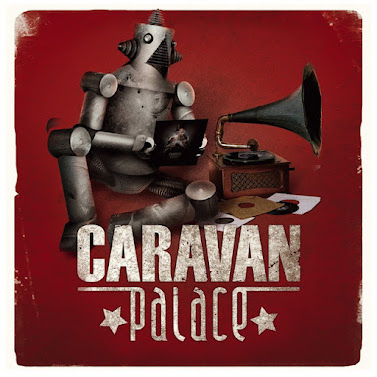There are few moments in music history when a song simultaneously makes you want to burn down your school and shake your ass. “Another Brick in the Wall (Part 2)” is one such moment. Released in 1979 by Pink Floyd—those eternal lords of angst, ambiance, and extended metaphor—it managed to sneak a protest anthem into the clubs by slathering it in disco grease and handing the chorus to a children’s choir. And somehow, it worked. It worked so well, in fact, that it pissed off Margaret Thatcher, the South African apartheid regime, and more than a few tweed-jacketed music teachers who were just trying to make it to retirement without getting quoted in Rolling Stone.
Players on the Field: The Usual Suspects, and Some Miniature Revolutionaries
• Roger Waters, bassist, lyricist, and resident misanthrope, wrote the piece. He also produced it, brooded over it, and probably muttered the word “fascists” under his breath 400 times during the recording.
• David Gilmour, guitarist and singer, did what Gilmour always does: he took something grim and made it gorgeous. His solo—recorded on a 1955 Gibson Les Paul Gold Top with P-90s—slices the air like a scalpel made of velvet.
• Bob Ezrin, producer and probable warlock, was the disco whisperer who told the band to add a four-on-the-floor beat. He also decided the song needed a children’s choir, because nothing says “down with the system” like 23 eleven-year-olds chanting about the collapse of modern education.
• Nick Mason (drums) and Richard Wright (keyboards) kept it tight and sparse—this wasn’t the time for Rick Wakeman cosplay.
And of course, the Islington Green School Choir, who went from studying Tchaikovsky to yelling “Hey! Teacher! Leave them kids alone!” in less time than it takes to schedule a parent-teacher conference.
Dark Sarcasm Meets Disco
On paper, it shouldn’t work. A dystopian concept album? Check. A minimalist song structure with two chords and a sulking bassline? Check. A disco beat that probably made Gilmour consider chewing his own pick in protest? Double check. But the genius is in the contradiction.
The rhythm section is hypnotic, pulsing like a synthetic heartbeat, while the guitar riff feels like it’s trudging through molasses with intent. Gilmour’s solo, meanwhile, is a scalpel-sharp indictment of every teacher who ever said, “You’ll never make it as a musician.”
The juxtaposition of Waters’ snarling vocals and the choir’s angelic rebellion is what pushes this track into the pantheon of musical irony. It’s weaponized innocence.
Rebellion in Plain English
“We don’t need no education / We don’t need no thought control”
Ah yes. The double negative that launched a thousand grammar complaints and just as many teenage revolts. These aren’t lyrics. They’re battle cries. This is Roger Waters turning his boarding school trauma into a lyrical Molotov cocktail.
The phrase “dark sarcasm in the classroom” might be one of the finest pieces of bitter poetics ever slipped onto vinyl. And “All in all you’re just another brick in the wall” becomes the thesis statement—not just of the song, but of The Wall as a whole. Everyone around Pink (the protagonist of the album) is complicit in building the psychological fortress that isolates him. Teachers, mothers, lovers—they’re all bricks.
This is less a song than a trial record.
Where Disco Meets Dystopia
The Wall, released in late 1979, was already a sprawling rock opera about abandonment, isolation, and the twisted hellscape of fame. But “Another Brick in the Wall (Part 2)” stood out because it somehow became a single. A hit single. A danceable hit single. From Pink Floyd.
That’s like releasing a catchy anthem from Schindler’s List.
The band hadn’t released a single in the UK since 1968, and they hated the idea. Waters reportedly told Ezrin he was wasting his time. Ezrin ignored them, built a Frankenstein of verses, choruses, and a choir, and made music history.
Thatcher, Apartheid, and the Dancefloor
The backlash was swift and, frankly, hilarious.
The Inner London Education Authority called the song “scandalous.” Margaret Thatcher hated it. South Africa banned it outright after students used it to rally against apartheid-era education policies. Pink Floyd went from being prog rock weirdos in planetariums to insurgent icons overnight.
And what did the kids get for their contribution? A concert ticket, a copy of the record, and no royalties. Because of course they didn’t. The British education system wasn’t about to reward protest.
It wasn’t until 2004, thanks to a legal change and some dogged detective work, that the choir members got a slice of the pie. It was a long time coming. A bit like justice. Or a good Gilmour solo.
A Brick Laid in Perpetuity
“Another Brick in the Wall (Part 2)” is more than a song. It’s a musical middle finger. It’s a protest wrapped in a groove, a scream masked as a singalong. It took the detached experimentalism of Floyd and shoved it into the center of pop culture, proving that a protest doesn’t have to be shrill—it can be seductive.
And nearly half a century later, it still hits like a ruler across the knuckles. Only this time, the kid slaps back.
#PinkFloyd #AnotherBrickInTheWall #RogerWaters #DavidGilmour #TheWall #ClassicRock #ProtestSong #MusicHistory #RockLegends #70sRock #IconicSongs #RockOpera #MusicThatMatters #EducationReform #DiscoRebellion #ConceptAlbum #CulturalImpact #GuitarSolos #BobEzrin #IslingtonGreenSchool #DarkSarcasm #SoundtrackToRebellion #MusicLegacy










